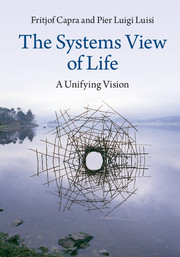Book contents
- Frontmatter
- Dedication
- Contents
- Preface
- Acknowledgments
- Introduction Paradigms in science and society
- I The mechanistic worldview
- II The rise of systems thinking
- 4 From the parts to the whole
- 5 Classical systems theories
- 6 Complexity theory
- III A new conception of life
- IV Sustaining the web of life
- Bibliography
- Index
6 - Complexity theory
from II - The rise of systems thinking
Published online by Cambridge University Press: 05 April 2014
- Frontmatter
- Dedication
- Contents
- Preface
- Acknowledgments
- Introduction Paradigms in science and society
- I The mechanistic worldview
- II The rise of systems thinking
- 4 From the parts to the whole
- 5 Classical systems theories
- 6 Complexity theory
- III A new conception of life
- IV Sustaining the web of life
- Bibliography
- Index
Summary
The view of living systems as self-organizing networks whose components are all interconnected and interdependent has been expressed repeatedly, in one way or another, throughout the history of philosophy and science. However, detailed models of self-organizing systems could be formulated only very recently when new mathematical tools became available that allowed scientists for the first time to describe and model the fundamental interconnectedness of living networks mathematically.
The intricacy of these networks defies the imagination. Even the simplest living system, a bacterial cell, is a highly complex network involving literally thousands of interdependent chemical reactions (see Figure 7.1). Before the 1970s, there was simply no way in which these networks could be modeled mathematically. But then powerful high-speed computers appeared on the scene, making it possible for scientists and mathematicians to develop a new set of concepts and techniques for dealing with that enormous complexity. During the subsequent two decades, these new conceptions coalesced into a coherent mathematical framework, popularly known as complexity theory. Its technical name is nonlinear dynamics, and it is sometimes also called “nonlinear systems theory,” or “dynamical systems theory.” Chaos theory and fractal geometry are important branches of this new mathematics of complexity, which has been discussed in several popular books (see Stewart, 2002, for an excellent nontechnical introduction), as well as in more technical textbooks (e.g., Hilborn, 2000; Strogatz, 1994). The discovery of nonlinear dynamics has led to major breakthroughs in our understanding of biological life and is widely regarded as the most exciting scientific development of the late twentieth century.
- Type
- Chapter
- Information
- The Systems View of LifeA Unifying Vision, pp. 98 - 126Publisher: Cambridge University PressPrint publication year: 2014



